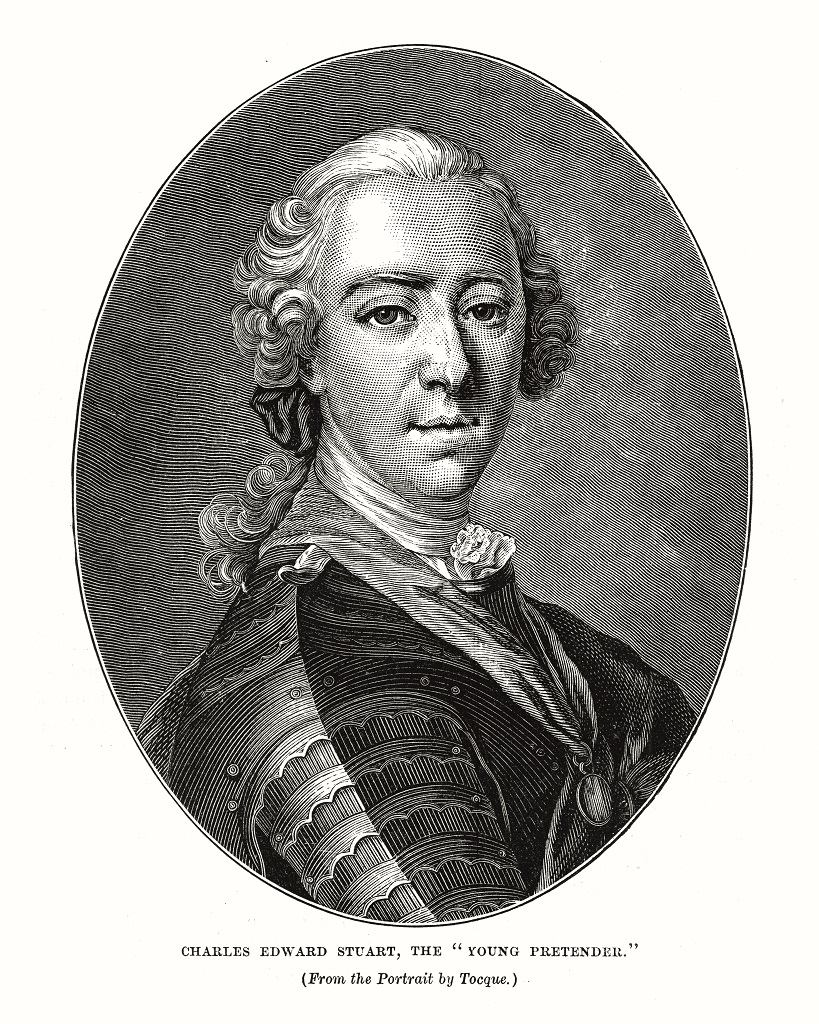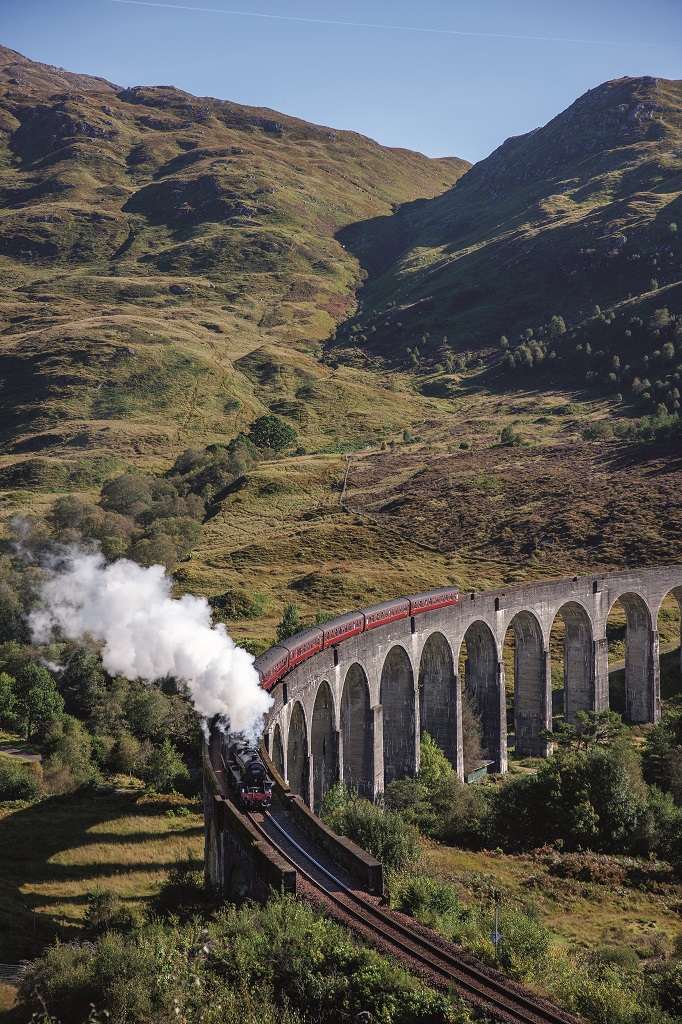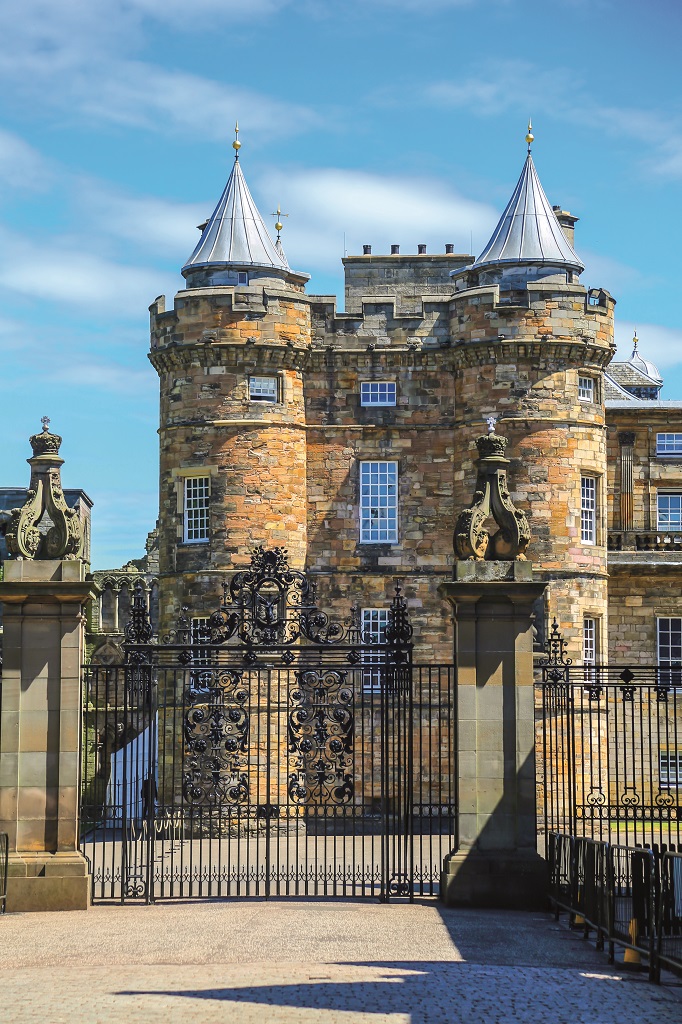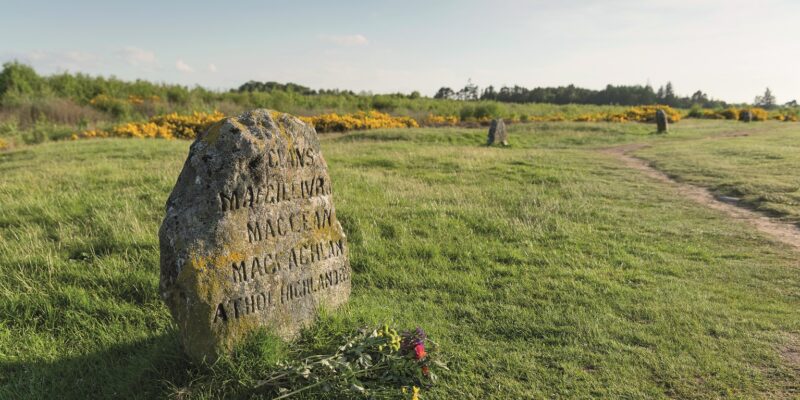To mark the 300th anniversary of the birth of Bonnie Prince Charlie, we take a tour of the places linked to his heroic but ultimately failed rising
MORE FROM SCOTLAND MAGAZINE
Standing at the top of the Glenfinnan Monument, mountains rear up in every direction, great sculpted peaks of green and grey rumpling the horizon. The waters of Loch Shiel stretch away beneath your feet, ridged with the force of the wind and filled with a reflection of the sky above. It is an arresting landscape, and a fitting spot for the stirrings of a rebellion.
This is where Prince Charles Edward Stuart, or Bonnie Prince Charlie as he is better known, began his campaign to retake the British throne in the name of his father, James Frances Edward Stuart. On 19 August 1745 he raised his battle standard and an army of some 1,200 Highlanders amassed behind him, all keen to fight for the Jacobite cause; less than a year later, many of them were dead.
Bonnie Prince Charlie’s campaign may not have been a successful one – it was, in fact, an unmitigated disaster for the Highlands – but it was a decisive moment in Scottish history, and few places evoke the spirit of it better than Glenfinnan. There is no better place to begin a Bonnie Prince Charlie tour of Scotland than here, and no better time than now, 302 years after his birth (on 31 December 1720).

The monument itself stands 18 metres high, a pillar of stone topped with a statue of a lone, kilted Highlander. This was erected in 1815 by Alexander Macdonald of Glenaladale and today is the centrepiece of a visitor centre where you can learn more about the infamous Prince and the Jacobite cause he led. The exhibition features interactive displays on how people secretly shared their support for the Jacobites, from white ribbons and rosebuds worn or displayed in solidarity with ‘the king across the water’ in exile in France, to back-to-front messages hidden beneath jugs and glasses and only revealed with the assistance of a mirror. It’s an absorbing place to spend an hour or two, and if you time your visit correctly, you’ll see the Jacobite Steam Train crossing Glenfinnan Viaduct, billowing clouds up into the hills and gathering quite a crowd (you can view the timetable at westcoastrailways.co.uk).

From Glenfinnan, head as Bonnie Prince Charlie did, to Edinburgh and the Palace of Holyroodhouse. The Prince marched on Edinburgh in August 1745 and captured the city before installing himself in the royal palace. Here, he prepared for his planned march south to London and the confidence he felt as he settled in at the palace is obvious in the portrait painted of him at the time by highly regarded Scottish painter Allan Ramsay.
Ramsay was reputedly ordered to “come to the palace of Holyroodhouse as soon as possible in order to take his Royal Highness’s picture” and the resulting oil painting now hangs in the Scottish National Portrait Gallery. In it, the Prince appears imperious, sure of his status as rightful heir to the British throne and wearing the sparkling star of the Order of the Garter.
The Prince’s time at the Palace of Holyroodhouse was full of glittering moments, from his initial entrance cheered by great crowds, to the extravagant balls he held in the Great Gallery, lit by hundreds of candles. On your visit to the palace you can walk the length of the imposing Great Gallery and poke your head into both the Ante-Chamber, where the Prince dined watched by crowds of admiring spectators, and Lord Darnley’s Bedchamber, a wood-panelled room with an ornate bed where the Prince is believed to have slept.
Today the palace is the British monarch’s official residence in Scotland and you can also see the rooms Her Majesty Queen Elizabeth II uses, including the Royal Dining Room, where the Royal Family dine when they stay here, and the Privy Chamber, where the Queen hosts private audiences with the First Minister.
During his time in Edinburgh, Bonnie Prince Charlie’s confidence was further bolstered by the Jacobites’ resounding victory at the Battle of Prestonpans. Here, just to the east of the city, on 21 September 1745, Jacobite troops defeated an army loyal to the Hanoverian King George II.

Make Prestonpans the next stop on your tour, allowing an hour or two to take in the panoramic views of the battlefield from the pyramid viewpoint at Meadowmill and to read the series of interpretation boards. You’ll discover how the Jacobites overpowered the government forces in less than 15 minutes, terrifying the redcoats with their Highland charge – a fast advance, a single volley fired, then hand-to-hand combat with broadsword, dirk (a long, thrusting dagger) and axe.
This was an extremely promising outcome for the Jacobites, and Bonnie Prince Charlie was galvanised by it, leaving Scotland and heading south to invade England in November 1745. But it was a short-lived invasion. The troops ultimately turning back at Derby, and before the end of the year the Prince was already on the retreat. The next few months saw the Prince and his forces retreat as far as Inverness and in April 1746 they met with Hanoverian forces once again, on Drummossie Moor just outside the city, near the village of Culloden.
No battle in Scottish history is as famous as the one that took place here on 16 April 1746. This was the last full-scale battle to be fought on British soil and it pitched Bonnie Prince Charlie and his army against the troops of the Duke of Cumberland. Both men were just 25.
The story of this final Jacobite rising is told in the museum that now stands here. It is a beautifully balanced account of the context of the battle, the events that led up to it and the aftermath, told from both the Jacobite and the government perspectives. Before heading out to see the battlefield itself you will also experience the 360-degree battle immersion presentation. This literally puts you at the heart of the action on that day, surrounding you with full-scale images of charging Highlanders and well-equipped government forces. Stepping out onto the windswept moor afterwards, the images are hard to shake.
Here, in the space of less than an hour, some 1,600 men lost their lives. Clan was pitched against clan, brother against brother and father against son. The vast majority of the casualties were on the Jacobite side and thanks to the Duke of Cumberland, also known as ‘Butcher Cumberland’, and his retributions, the Highlands were never the same again.
There is no triumphant end to a Bonnie Prince Charlie themed tour of Scotland, because there was no triumphant end for the Prince himself. After escaping to France several months later he lived the rest of his life in exile. Meanwhile the Highlanders were hunted down and executed by Cumberland, their very way of life repressed with the banning of the kilt and the Gaelic language.

Culloden may be a sobering place to visit but walking out onto the moor to see the memorial stones that stand in honour of each clan who lost members on that fateful day is an emotive experience no lover of Scotland should miss. Here Scottish history was made. And under sunny skies and with the purple heather catching the light, it can even appear beautiful. Or, perhaps, bonnie.
The visitor centre (free) and monument (£4) are operated by the National Trust for Scotland. nts.org.uk
The palace is part of the Royal Collection Trust. Entrance is £16.50 and includes a multimedia tour. rct.uk
Admission to the gallery at 1 Queen Street, Edinburgh is free. nationalgalleries.org
The Battlefield Viewpoint at Meadowmill is free to access and signposted from Prestonpans railway station. There is car parking at Meadowmill Sports Centre. In September 2021 a major re-enactment of the Battle of Prestonpans will take place, celebrating the 275th anniversary of the battle (postponed from 2020). prestonpans275.org
The museum and battlefield are operated by the National Trust for Scotland. Entrance is £11. nts.org.uk
Read more:
MORE FROM SCOTLAND MAGAZINE

SCOTLAND MAGAZINE
Published six times a year, every issue of Scotland showcases its stunning landscapes and natural beauty, and delves deep into Scottish history. From mysterious clans and famous Scots (both past and present), to the hidden histories of the country’s greatest castles and houses, Scotland‘s pages brim with the soul and secrets of the country.
Scotland magazine captures the spirit of this wild and wonderful nation, explores its history and heritage and recommends great places to visit, so you feel at home here, wherever you are in the world.